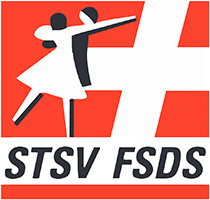Follow us on social networks
Marketplace
In dance sport, dancing is practised as a sport. Competitive dancing is also called ballroom dancing. Dancing sports include Latin American dances, standard dances, rock 'n' roll, boogie-woogie, bugg and West Coast swing, as well as modern line dancing, cheer dancing, hip-hop, show dancing, discofox, tap dancing, break dancing, electric boogie, jump style, contemporary, and jazz and modern dancing.
At dance tournaments, dance couples compete against each other. Judges assess the performances from various points of view and award points or placement recommendations, which are used to determine winners and rankings. The course and form of the tournaments can vary greatly.
Dance sport is popular both at the grassroots level and in tournament and competitive sport. Ideally, the transition from hobby dancers to ambitious amateur dancers to beginners in the tournament scene is fluid. There are tournaments for both amateur and competitive dancers. Dance couples compete. Following the tournament rules, they either present a rehearsed choreography or freely interpret a piece of music.
In tournaments organised by the Swiss Dance Sport Federation (STSV), couples compete against each other in competitions divided according to age and performance classes. During the preliminary and intermediate rounds, they are comparatively assessed in their performance by an odd number of adjudicators in hidden scoring. On the basis of this point-by-point evaluation, it is decided whether or not a couple will advance to the next round. At least half of the couples from the previous round take part in the next round, up to five rounds per tournament depending on the number of couples. Up to seven couples make it to the final round and can earn a coveted placement, of which between five and ten are needed to advance to the next higher class. A certain number of points are also required to advance to the next higher class. Placings and points are recorded in a pair's start book. While the start book used to be paper, the administration of points and placings is now done electronically. The couples receive an ID card and can access their results, points and placings online.
The competition couples are divided into different age categories based on their age (year of birth) in accordance with the WDSF rules:
The transfer to a higher age category is automatic for the categories Pupils, Juniors, Youth, Main Category and Seniors I on 1 January of the year in which the conditions for a transfer are met.
In case of a transfer to a higher age category, the couple continues to dance in the same starting class as before.
Tournament couples of the age categories Seniors II - IV decide at the time of the licence order for which age category and starting class they apply for an STSV licence. A change of age category and starting class is only possible for these couples at the time of the licence order. In case of obvious misclassification, the federation may make a classification correction.
The competition couples are divided into one of the different starting classes in each discipline and age category, which are usually differentiated by the level of performance:
Entry into ballroom dancing always begins in the D class. Upon application, the Association may grant exceptions in justified cases.
Amateur competition (without licence)
These tournaments are for beginners. Only 3 dances from both disciplines (Standard and Latin) are danced. In Standard these are; English Waltz, Tango, Quickstep and in the Latin dances, ChaChaCha, Rumba and Jive.
Combination Tournament (10-Dance)
In a combination or tournament over ten dances, all ten classical ballroom dances (standard and latin) are completed in one competition.
Ranking tournament
Ranking tournaments are held in the performance classes of the respective age groups in both disciplines (Standard and Latin). At these tournaments, the couples receive so-called ranking points depending on their placement.
In dance sport tournaments, the scoring procedures differ in the preliminary rounds and the final round: While in the preliminary and intermediate rounds, the adjudicators award crosses (marks), in the final round, a placement score takes place.
Preliminary and intermediate rounds
If there are more than six competing couples, preliminary rounds and possibly intermediate rounds will take place. In the preliminary round, all competing couples take part. However, as only six couples are allowed to compete in the final round, the number of couples in the preliminary and intermediate rounds must be reduced to this number. This is done by means of a selection score. For this purpose, the adjudicators distribute crosses for each dance to those couples they would like to see again in the next round (or the final round).
A couple can collect a maximum of as many crosses in each dance as there are adjudicators. The couples who have collected the most crosses in all dances (simple addition) move on to the next round. The eliminated couples will be placed according to the sum of the crosses. If several couples have the same number of crosses, the respective place will be divided.
Redance (Hope Run)
At international tournaments, it is customary to hold a hope round. In the first round (preliminary round), the couples have the opportunity to qualify directly for the intermediate round. Of the couples who do not qualify, some get their second chance to qualify for the intermediate round in the Redance.
Final round
All dance sport tournaments are judged by an odd number of adjudicators so that there is a clear majority. The adjudicators make a placement recommendation and a couple receives a place number if they receive the majority of placings for that place or a better place (for more details see Majority System). This is done separately for each dance in a competition. The place numbers are then summed to determine the final result, with the lower sum giving the better place. If the result is equal, the skating system is used, which takes more account of the individual placement recommendations.
The adjudicators evaluate the couples' performances relative to each other. They have four evaluation criteria at their disposal.
Each scoring criterion is further divided into sub-items.
The degree of difficulty is basically not an area of evaluation. The better performance is to be measured by the rhythmic and energetic execution of the dance. The different judging areas are not equal to each other. Only when it is no longer possible to differentiate between the couples in a particular judging area should the next judging area be used.
This text is based on the article Dance sport from the free encyclopaedia Wikipedia

SWISS DANCESPORT FEDERATION
| Cookie | Dauer | Beschreibung |
|---|---|---|
| cookielawinfo-checkbox-analytics | 11 months | This cookie is set by GDPR Cookie Consent plugin. The cookie is used to store the user consent for the cookies in the category "Analytics". |
| cookielawinfo-checkbox-functional | 11 months | The cookie is set by GDPR cookie consent to record the user consent for the cookies in the category "Functional". |
| cookielawinfo-checkbox-necessary | 11 months | This cookie is set by GDPR Cookie Consent plugin. The cookie is used to store the user consent for the cookies in the category "Necessary". |
| cookielawinfo-checkbox-others | 11 months | This cookie is set by GDPR Cookie Consent plugin. The cookie is used to store the user consent for the cookies in the category "Other. |
| cookielawinfo-checkbox-performance | 11 months | This cookie is set by GDPR Cookie Consent plugin. The cookie is used to store the user consent for the cookies in the category "Performance". |
| viewed_cookie_policy | 11 months | The cookie is set by the GDPR Cookie Consent plugin and is used to store whether or not user has consented to the use of cookies. It does not store any personal data. |
Follow us on social networks
Marketplace

Together with our media partner Swiss Sport TV, we are offering an uncommented live stream with all decisions and award ceremonies from the Trafo Cup in Baden. So if you can't be there,
is nevertheless there live.
Sign up to receive updates, promotions, and sneak peaks of upcoming products. Plus 20% off your next order.